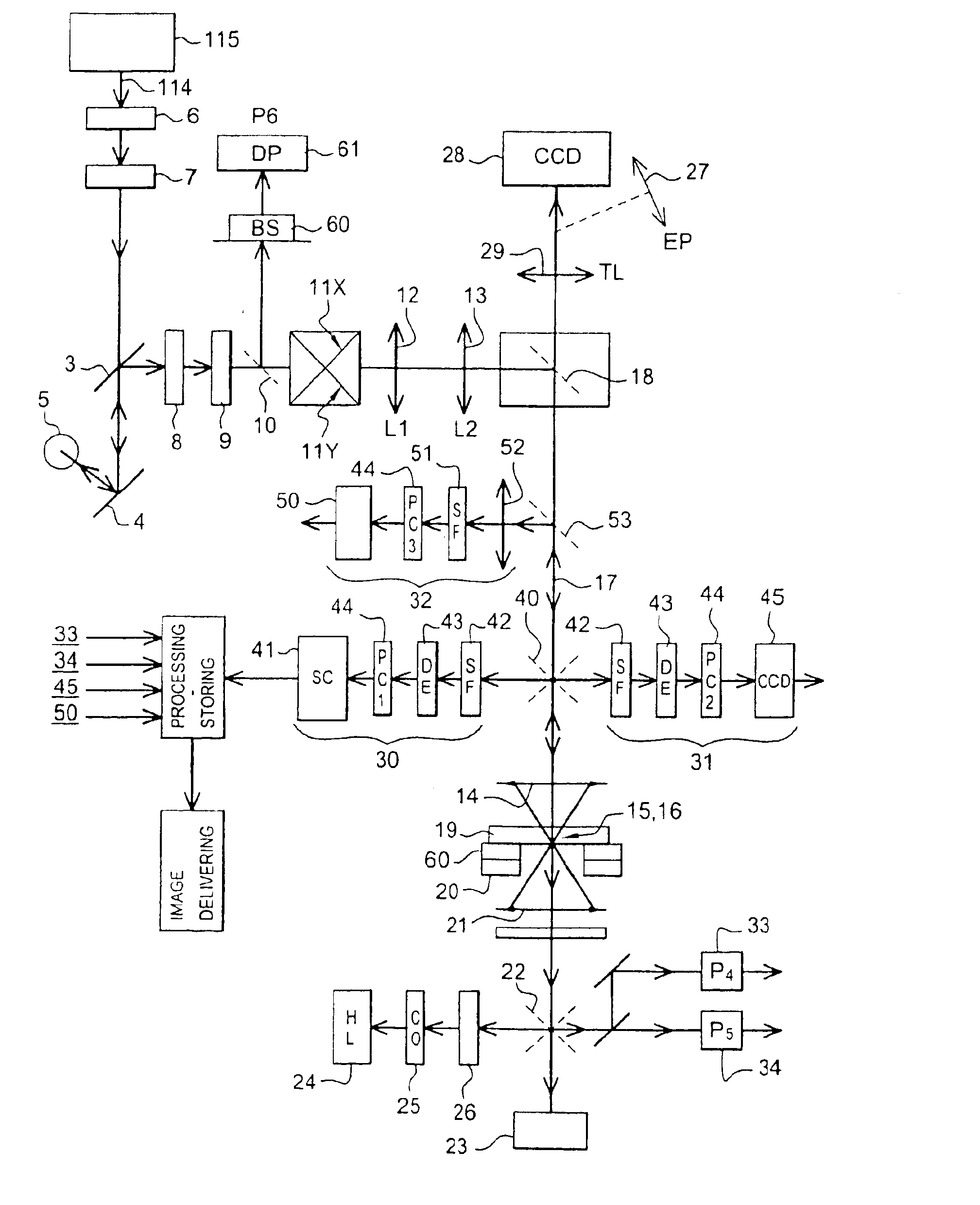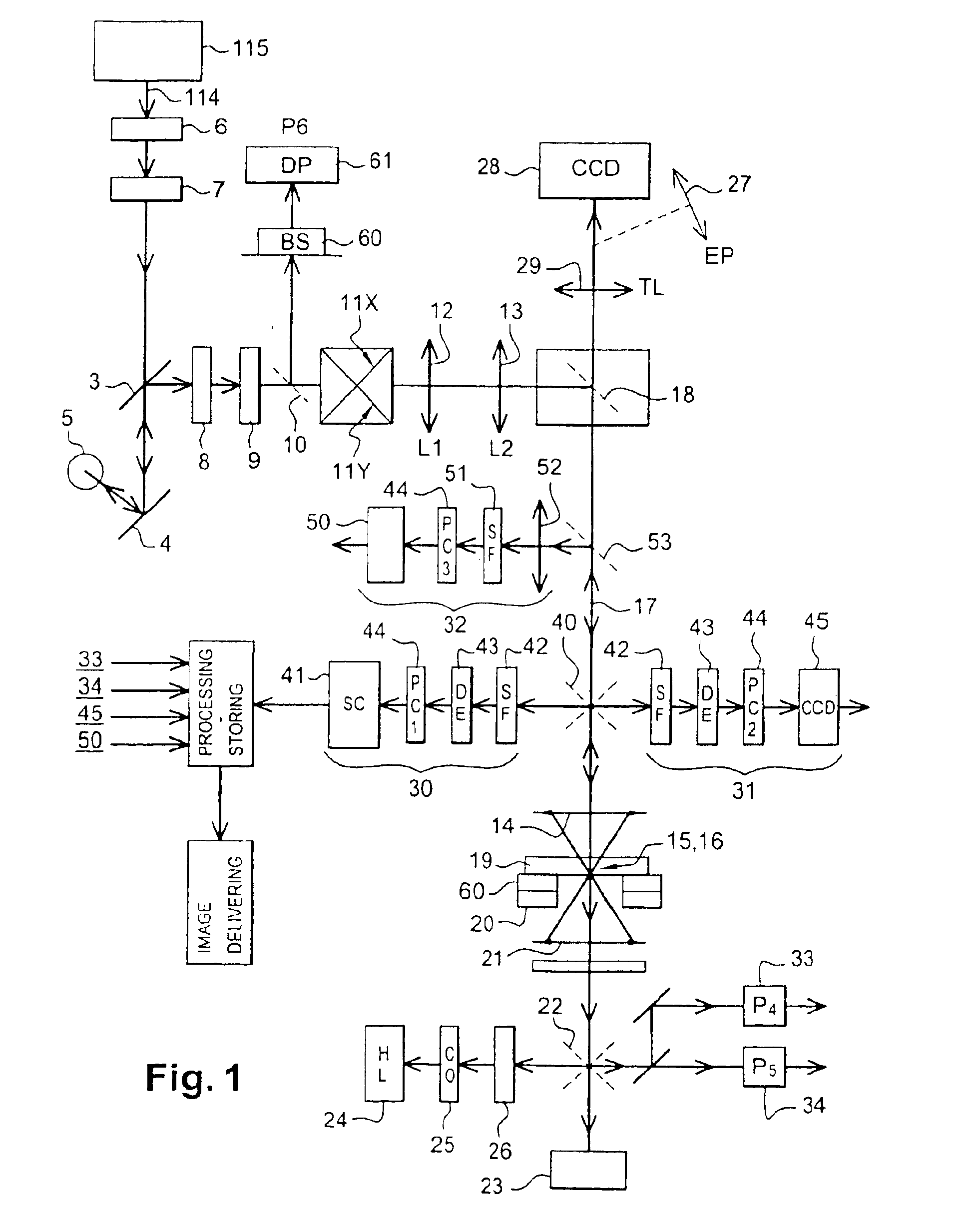Multi-photon imaging installation
a multi-photon imaging and installation technology, applied in the field of biological material imaging, can solve the problems of insufficient lateral and depth resolution, time-consuming use of extrinsic luminescent contrast agents, and insufficient labelling procedures,
- Summary
- Abstract
- Description
- Claims
- Application Information
AI Technical Summary
Benefits of technology
Problems solved by technology
Method used
Image
Examples
Embodiment Construction
In the description below, reference is made to an installation and a method for multi-photon imaging of a biological material. More precisely, reference is made, purely by way of example, to a multi-photon imaging microscope.
As mentioned above, the invention refers to an installation (or instrument) that permits laser scanning imaging of a biological sample chosen area, in an appreciably continuous way or at selected discrete points, in two (2D) or three (3D) dimensions, by moving either a laser beam or the sample holding stage, or both.
At each scanning point, with a dwell time between two successive points typically ranging from 100 microseconds up to seconds, a light emitted by a pulsed laser source is focused in a “focal volume” within or at the surface of the sample. The intrinsic chromophores comprised in the sample absorb groups of at least two synchronized photons to produce non-linear response photons which can be collected and integrated on several kinds of detectors: (1) a...
PUM
| Property | Measurement | Unit |
|---|---|---|
| wavelengths | aaaaa | aaaaa |
| wavelengths | aaaaa | aaaaa |
| wavelengths | aaaaa | aaaaa |
Abstract
Description
Claims
Application Information
 Login to View More
Login to View More - R&D
- Intellectual Property
- Life Sciences
- Materials
- Tech Scout
- Unparalleled Data Quality
- Higher Quality Content
- 60% Fewer Hallucinations
Browse by: Latest US Patents, China's latest patents, Technical Efficacy Thesaurus, Application Domain, Technology Topic, Popular Technical Reports.
© 2025 PatSnap. All rights reserved.Legal|Privacy policy|Modern Slavery Act Transparency Statement|Sitemap|About US| Contact US: help@patsnap.com



